Mature Hairline: Everything You Need to Know
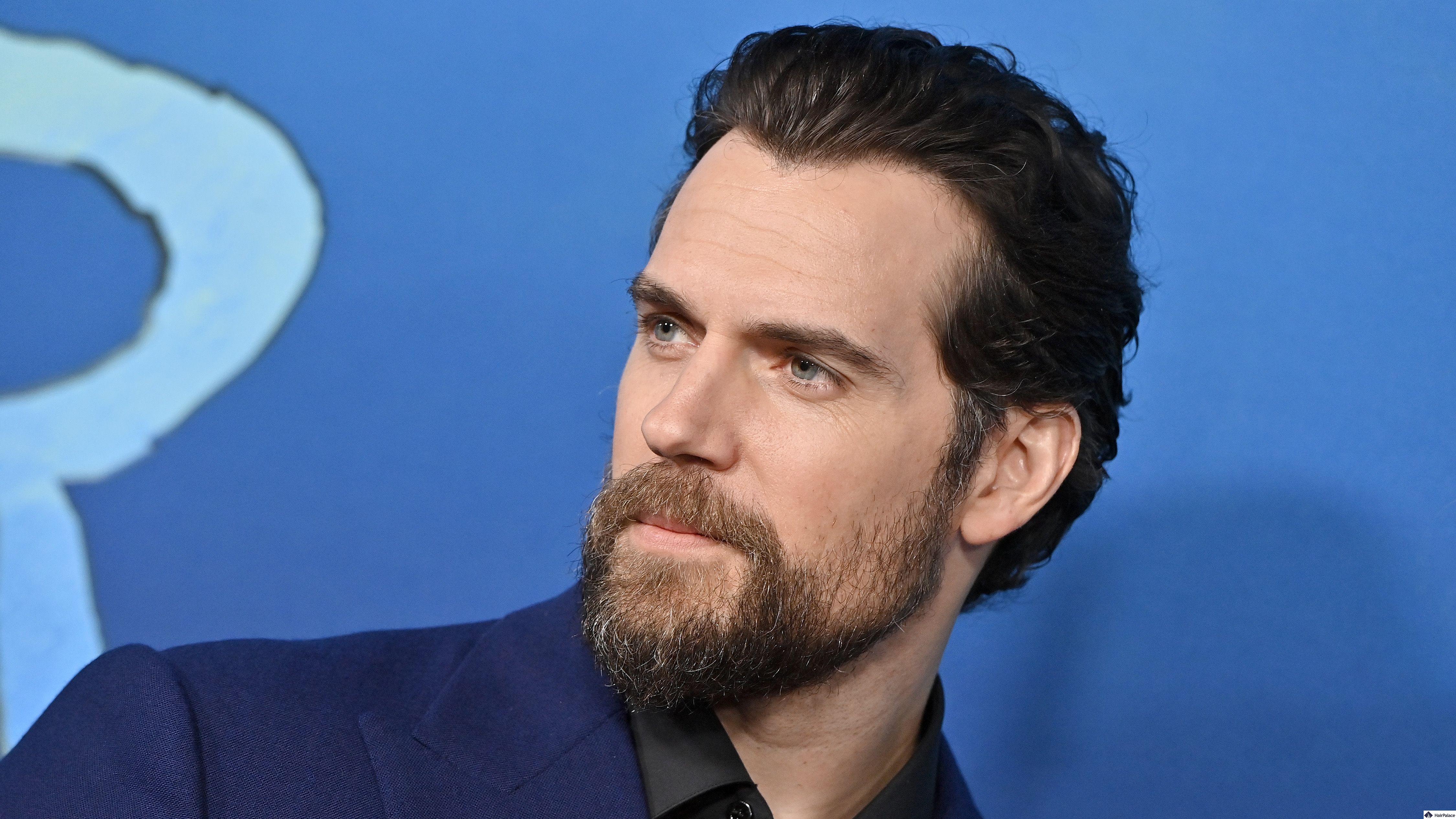
A mature hairline is a natural progression from the juvenile hairline, typically occurring in men between the ages of 17 and 30.
It is characterized by a slight recession of the hairline, usually up to an inch, forming a more defined and less rounded appearance.
Unlike a receding hairline caused by androgenetic alopecia, a mature hairline is a normal part of ageing and does not necessarily indicate future hair loss.
There are multiple ways to deal with this condition, join us as we explore everything you need to know.
We’ll cover the common signs to be aware of, how it’s different to a receding hairline, and how you can live with yours.
- What it is
- Why hairlines mature
- Different shapes
- Maturing vs receding hairline
- Is your hairline maturing?
- Causes
- Treatment options
What is a mature hairline?
Hairlines mature, this is a natural sign of ageing and is nothing to worry about.
While some men will retain a young hairline for their entire lives, others may develop a mature hairline at 20 or 30.
This occurs when the hairline recedes from its juvenile position slightly, either half an inch or a full inch.
Men tend to have a full head of hair with a juvenile hairline in their teens.
Key traits of a young hairline include a neat, straight outline at the front with rounded corners.
At what age do you get a mature hairline?
Typically, male hairlines start to mature between the ages of 17 and 30.
The entire adult hairline remains well defined, but it moves back no farther than an inch from its original, juvenile position.
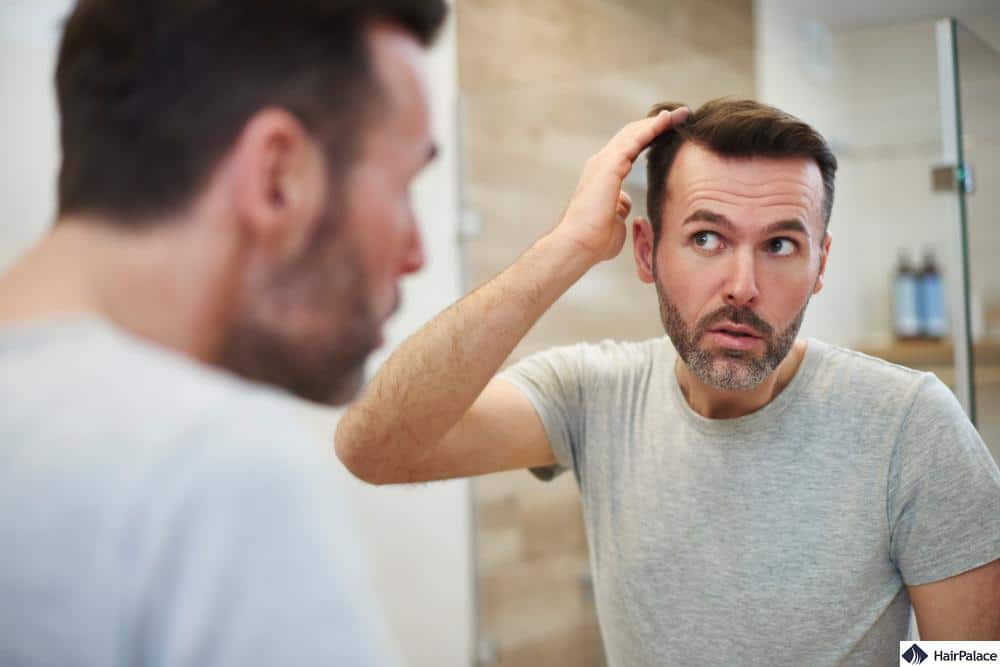
Why hairlines mature
A maturing hairline occurs due to biological reasons. During puberty, hormonal changes affect key functions within our system including hair growth.
In this period, testosterone levels also increase as the body metabolizes testosterone, it breaks it down to dihydrotestosterone (DHT).
DHT affects our hairs by binding to certain receptors found on the scalp and shrinking hair follicles.
This may lead to substantial hair loss over time that can severely alter the appearance of a normal male hairline.
This is the process responsible for the hair loss that occurs with both male pattern hair loss and a maturing hairline.
The difference between a mature hairline vs receding hairline is the amount of DHT your body produces and the extent of the hair loss.
While not all men will experience male pattern baldness, almost all men experience a maturing hairline at some point throughout their lives.
The different shapes of the maturing hairline
Mature hairlines develop at varying speeds and in diverse patterns.
Some mature so gradually, possibly even over a decade, that the individual and others around him may not notice the change.
But other men may see their hairline receding sooner and fear that it’s the onset of male pattern baldness, which affects around 50% of men over 50.
Here are some mature hairline examples:
- Usually the maturing happens gradually, which is why the change may go unnoticed, though that’s not always the case.
- It forms a widow’s peak or M-shaped pattern, without the round curves of a juvenile hairline. A widow’s peak leaves a V-shaped patch of hair in the centre of the hairline with the rest of the hairline receding to a higher position. An M-shaped hairline loses the round curves of a juvenile line.
- It usually recedes to a point no higher than one to 1.5 inches above your highest forehead wrinkle. You may see around one finger’s width of space between the highest wrinkle and the hairline.
Maturing hairline vs receding hairline
You may initially mistake a maturing hairline for a receding hairline, and vice versa.
A maturing hairline is just a natural part of ageing that’s unlikely to lead to further hair loss, while a receding hairline is usually related to male pattern baldness.
It can be difficult to identify how a man’s hairline is changing and how it will progress.
If you’re still unsure about having a mature hairline or a receding one here are a few ways to spot the difference between the two:
1. Advanced recession near the temples
A mature hairline (Norwood 2) may have an M shape, though it tends to be fairly subtle.
Generally speaking, a mature hairline is 2 to 3 cm higher than a juvenile hairline.
It is also important, that a mature hairline will remain in this position and not recede any further.
A receding hairline typically retreats back much further than a mature hairline.
As a sign of hair loss, receding or balding hairlines will usually retreat back by several centimetres, going further and further up the scalp.
This leads to your forehead appearing larger than it is.
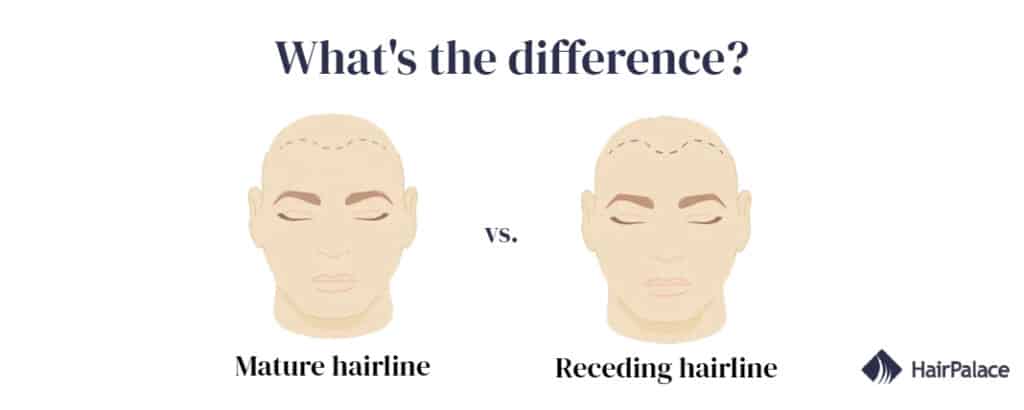
2. Developing short hairs before the hairline
A mature male hairline will have some shorter and smaller hair strands growing ahead of the hairline.
However, if you see many of these hairs it may be an indication that you have a receding hairline.
It’s normal to have some shorter, smaller hair strands growing ahead of your hairline, but if you find you have many of them, that could indicate that you have a receding hairline.
3. Losing more hair than usual
It’s natural to lose between 50 and 100 hairs a day without realising.
As it’s usually very gradual, it’s unlikely that you will notice more hair fall if you have a mature hairline.
But if you find clumps of it in the shower, on your pillow, or while applying the product, it may be a sign of a receding hairline.
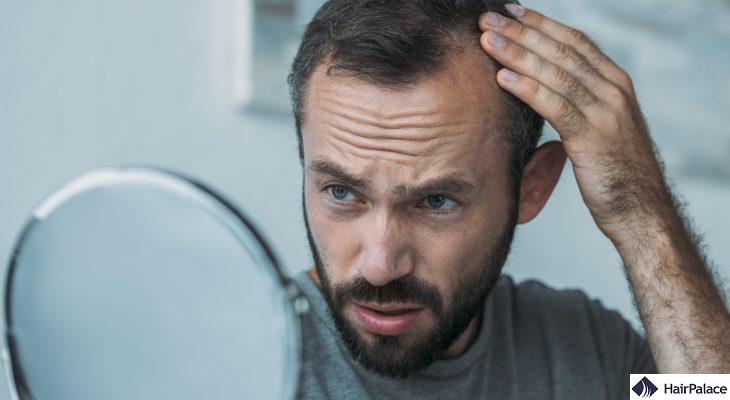
4. Cause of hair loss
Maturing hairlines are a result of the body’s natural ageing process.
The list of possible causes for a receding hairline is far longer than for a mature hairline.
In most cases, receding hairline happens due to hormonal imbalances and genetics.
However, it can also happen due to lifestyle factors, such as smoking, stress, or excessive styling practices.
A receding hairline may occur due to illness, medical treatments, or as a side effect of certain medications.
Doctors or hair specialists (i.e. hair restoration surgeons or trichologists) can help you understand whether the frontal line of your hair is receding or maturing.
They’ll examine your hair strands and scalp to identify signs of hair loss. And they can offer advice on treatment options for thinning hair.
Is your hairline maturing?
Mature and receding hairlines both take shape gradually over a long period of time, most men are completely unaware that they are losing hair until their hairline shifts dramatically.
Do you have a maturing hairline? To find out, follow the steps below:
- Test yourself
The easiest way to determine whether you have a mature hairline is to do a quick test.
Raise your eyebrows, as if you were surprised to reveal the wrinkles on your head.
The highest wrinkle in the frontal region will identify your juvenile hairline.
Up to an inch above your top wrinkle line is the point from which we can talk about a mature hairline.
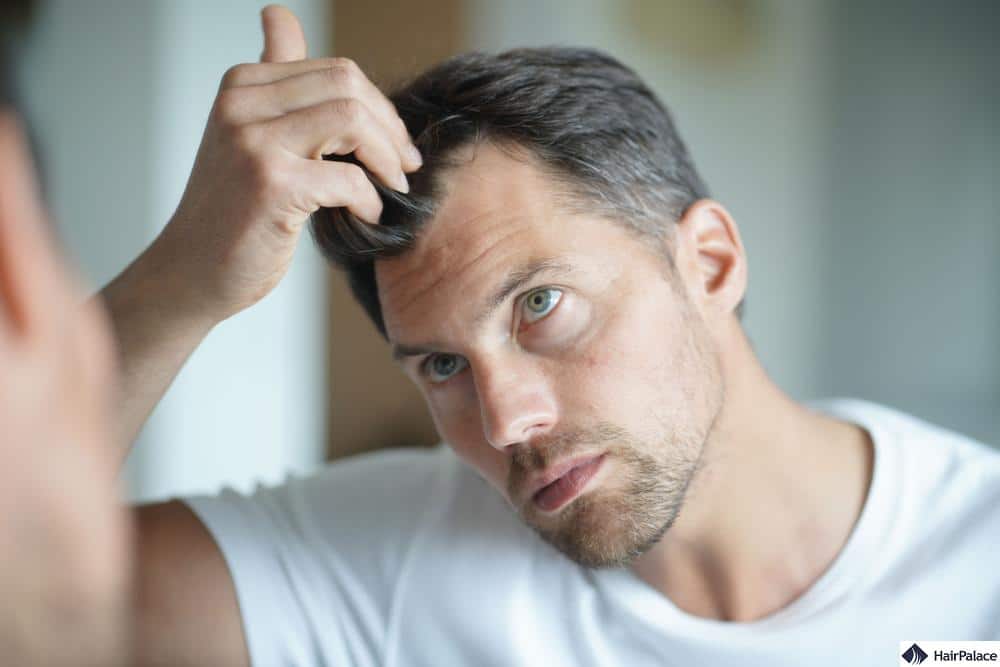
- Examine your hairline
You will probably notice some degree of hairline recession, which might be unsettling at first.
However, if your new hairline still closely resembles your juvenile hairline in shape, you most likely have a mature hairline instead of a receding hairline.
You may notice a more defined hairline that is slowly creeping up your temple.
This is a tell-tale sign of an adolescent hairline as long as it isn’t too extreme.
- Take a look at your widow’s peak
Mature hairlines are much more defined than a juvenile hairline, which appears more round.
A mature hairline will usually take the shape of a V, leading to a pronounced widow’s peak.
If you notice your widow’s peak becoming more prominent over time you most likely have a receding hairline.
- Use the Norwood Scale to identify the extent of your hair loss
Whether you have a receding hairline or a mature one, your hair pattern resembles stages laid out in the Norwood scale.
The Norwood scale breaks down the process of hair loss into seven stages. It is one of the most widely used tools to identify pattern balding.
If you hairline resembles Stage 1 on the Norwood scale you have a juvenile or immature hairline.
This is the stage where patients exhibit no hair loss, while Stage 2 is where we talk about a receding hairline.
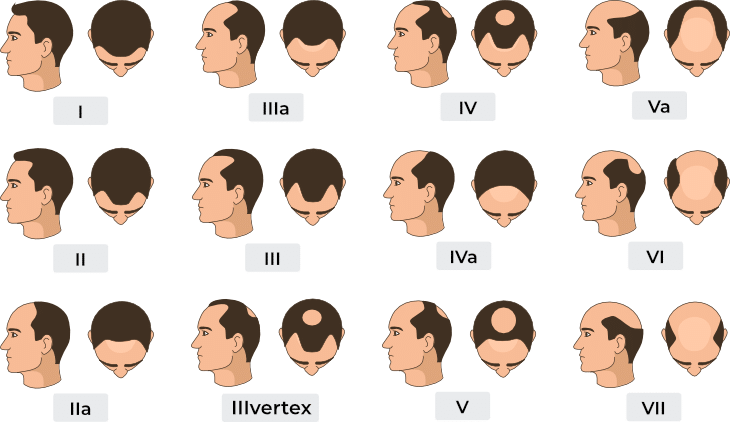
The 7 leading causes of mature hairline
Let’s take a look at some of the most common causes of hair loss:
1. Ageing
Hairline recession and hair loss typically occur due to the natural ageing process.
Hair grows from hair follicles, as these follicles become damaged by various outside factors throughout life, you may experience hair loss or a receding hairline as a result.
2. Hormonal changes
Hormonal imbalances may also result in hair loss and a receding hairline.
DHT is recognized as the main cause of male pattern baldness, as it shrinks hair follicles and leaves them unable to produce new hair.
3. Genetics
Family history plays a key role in whether you develop a receding hairline.
If a member of your family has suffered from hair loss in the past you are more likely to experience a receding hairline yourself.
4. Stress and illness
Following an illness or a stressful period, you may experience telogen effluvium.
This condition causes excessive hair shedding within a short period. Luckily, it usually resolves naturally and the hair will regrow.
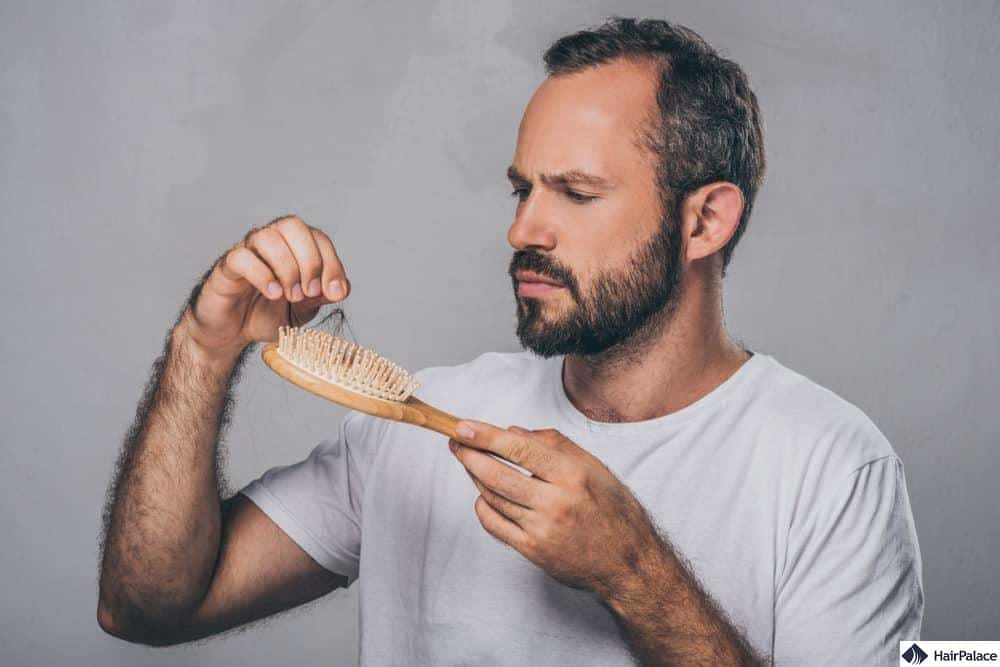
5. Medications or treatments
Some medical procedures and medications may lead to hair loss as a side effect.
One of the best examples of this is chemotherapy, which typically leads to hair loss on both the scalp and the body.
6. Hairstyling
Excessive hair styling practices such as overusing blow dryers or hair straighteners and frequently perming or colouring your hair can cause damage to your hair follicles and lead to hair loss over time.
7. Lifestyle choices
Our lifestyle choices affect our hair volume and can alter our normal hairline.
Not having a balanced diet that is rich in vitamins and minerals may lead to a receding hairline.
Eating a diet that largely consists of processed food, or foods rich in sugar, saturated fats and preservatives may stunt healthy hair growth.
How to deal with your mature hairline
You may feel relieved if a doctor or hair specialist confirms that you have a mature hairline rather than a receding hairline.
But it can still be frustrating to see your hairline sitting an inch or higher than it used to be.
Some men struggle to accept this change, particularly if they can’t wear their preferred style or they worry about other people noticing their thinner hair.
Here are a few tips to help you feel more satisfied with your hair:
- There’s no guarantee that you will go bald: You might worry about losing more of your hair and becoming bald when your hairline matures. Your hair could stay strong and healthy for decades to come before you experience any further shedding. Try to relax and enjoy your hair instead of stressing.
- Experiment with new styles: You may not be able to style your hair exactly how you like to when you develop a mature hairline — but that doesn’t mean you can’t still have fun with it. Speak to a stylist about techniques to minimise signs of hair loss around the hairline, such as slicking it back or parting it in a different direction.
- Mature hairline transplant: Hair transplants are more popular and affordable than ever. Hair restoration surgery will cultivate new growth which leads to a lower and thicker hairline. Your hair will look more youthful but still completely natural.

Try preventative methods
Here are a few useful tips to combat the signs of male pattern baldness or a maturing hairline. The most popular include:
- Avoid tight hairstyles like man buns
- Don’t wear hats for prolonged periods
- Do not take testosterone
- Eat a diet rich in vitamins
- Limit creatine consumption
- Manage your stress levels
- Go to a diabetes screening
Mature Hairline FAQ
It’s perfectly normal for men to develop a mature hairline: more than 95% of males will experience this type of mild hair loss. You may have a mature hairline if you see recession at the hairline — it doesn’t mean you’re going bald. Most hair specialists agree that maturing hairlines don’t necessarily lead to baldness.
A mature hairline does not necessarily mean balding. It’s a natural hairline progression for many men as they age, distinct from pathological hair loss.
The condition can stabilize and stop receding, differentiating it from male pattern baldness where the recession continues.
To know if you have a mature hairline, compare your current hairline to old photos. A mature hairline typically recedes slightly from the adolescent hairline, especially at the temples, but doesn’t progress rapidly as in male pattern hair loss.
A mature hairline can start to develop in men as early as their late teens to early 20s.
To measure a mature hairline, observe the distance from the center of the glabella (the space between the eyebrows) to the hairline. A mature hairline is typically 0.5 to 1.5 inches (1.3 to 3.8 cm) higher than an adolescent hairline.
A hairline typically starts to mature in men’s late teens to early 20s, but the exact age can vary for each individual. Some might experience it slightly earlier or later.
You can try treatments like minoxidil or finasteride to slow hair loss and regrow hair, support scalp health with good diet and care, and in advanced cases consider a hair transplant.
Last medically reviewed on September 18th, 2025
- Rassman, William R., Jae P. Pak, and Jino Kim. "Phenotype of normal hairline maturation." Facial Plastic Surgery Clinics 21.3 (2013): 317-324.
- Stough, D. Bluford, Barbara J. Schell, and Randall P. Weyrich. "The role of facial proportion in hair restoration surgery." Annals of plastic surgery 38.2 (1997): 129-136.
- McElwee, Kevin J., and J. S. Shapiro. "Promising therapies for treating and/or preventing androgenic alopecia." Skin therapy letter 17.6 (2012): 1-4.
- Rathnayake, Deepani, and Rodney Sinclair. "Male androgenetic alopecia." Expert Opinion on Pharmacotherapy 11.8 (2010): 1295-1304.
- Hogan, Daniel J., and Matthew Chamberlain. "Male pattern baldness." Southern medical journal 93.7 (2000): 657-662.
- Phillips, T. Grant, W. Paul Slomiany, and I. I. Robert Allison. "Hair loss: common causes and treatment." American family physician 96.6 (2017): 371-378.
- Everything you need to know about DHThttps://www.medicalnewstoday.com/articles/68082
- Why Do Men Go Bald and What Can You Do About It?https://www.healthline.com/health/why-do-men-go-bald

